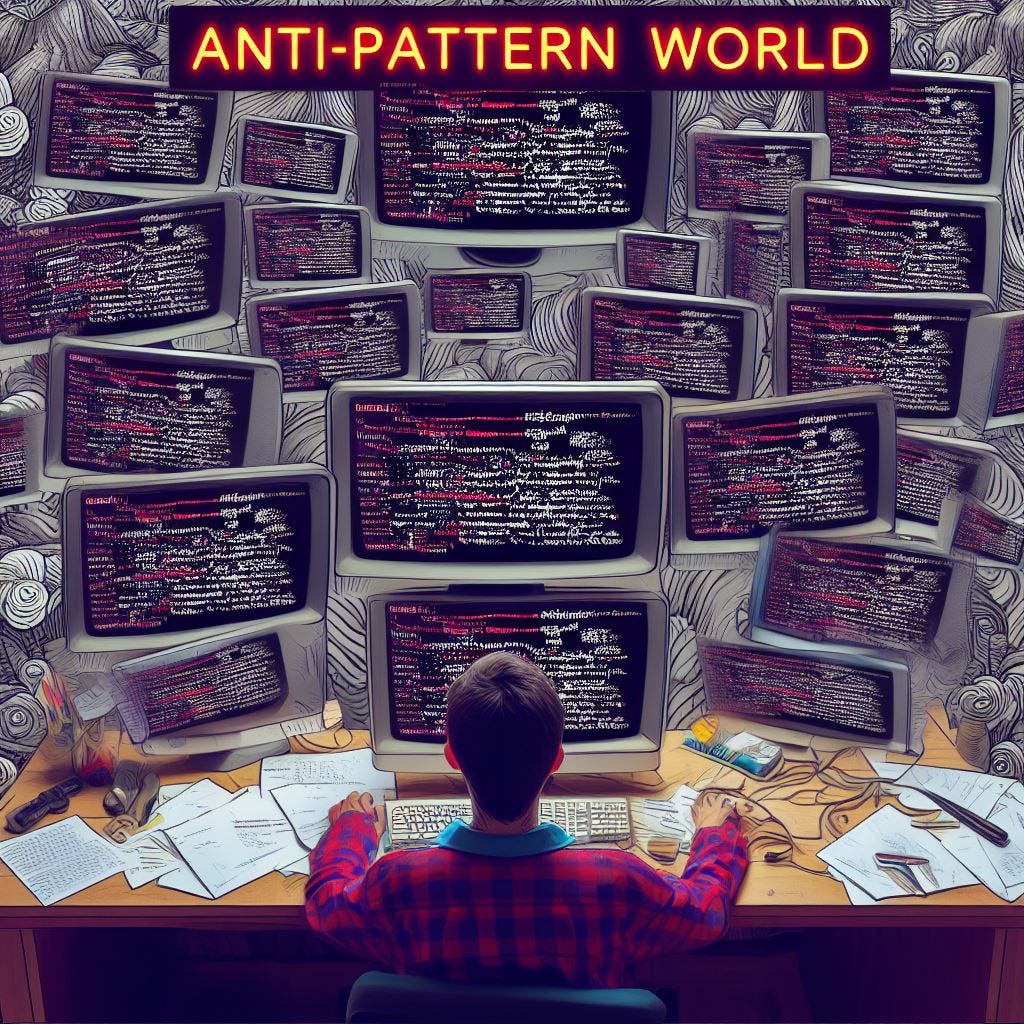3 Software Development AntiPatterns you should know
Knowing why not doing something is the best way to avoid doing it
It is very common to hear about design patterns. Design patterns are common solutions to common problems. And what are antipatterns?
Antipatterns are the opposite, this means that they are common wrong solutions for common problems. Based on that, it is essential to know these wrong solutions to avoid them. So let’s see 3 antipatterns you should know.
1. Spaghetti Code
The Spaghetti Code AntiPattern is the classic and most famous AntiPattern. This principle violates the idea of high cohesion and low coupling.
In essence, “Spaghetti Code” gets its name because, like tangled spaghetti on a plate, the code becomes hard to follow due to a mess of interconnections and unpredictable jumps between different parts of the code.
This antipattern causes some problems like:
Complex Control Flow: Spaghetti Code often involves convoluted and unpredictable control flow, making it challenging to follow the logic of the program.
Increased Risk of Errors: The lack of clear structure and organization increases the likelihood of introducing errors during development and maintenance.
Maintenance Challenges: Modifying or adding new features becomes difficult and error-prone, as changes in one part of the code may have unintended consequences elsewhere.
Limited Reusability: Code modules are often not modular or reusable, as they are tightly integrated into the tangled structure of the program.
The solution to this problem involves employing design solutions, structured development methodologies, and design patterns to bring order and maintainability to the codebase.
2. Cut-And-Paste Programming
The Cut-And-pate Code AntiPattern violates the principle Don’t Repeat Yourself (DRY) and is more related to the anti-principle Write Every Time(WET).
The “Cut-and-Paste Programming” refers to a practice where developers reuse code by copying and pasting it from one part of the software to another, often without fully understanding how it works or without considering the context of its new location.
This antipattern causes some problems like:
Increased Risk of Errors: Copying code introduces the risk of errors, especially if changes are made in one location but not in others, leading to inconsistent behavior.
Inefficient Resource Utilization: Duplicate code consumes additional resources, as each copy requires memory and storage space.
Code Duplication: Copying and pasting code results in redundant copies, making the codebase harder to maintain and increasing the risk of inconsistencies.
Maintenance Challenges: Changes or bug fixes must be applied to each copied instance individually, increasing the likelihood of inconsistencies and making maintenance more difficult.
To avoid this antipattern we should follow best practices to promote code reuse, modularity, and maintainability.
3. God class
The God Class AntiPattern is very common to see in big applications, usually Monolith. This antipattern is usually related to big classes, the class that usually violates the Single Responsibility Principle (SRP), and does many things.
The term "God Class" implies that this class has god-like powers and knows too much about the inner workings of the application. It becomes a central point for various functionalities, holding a disproportionate amount of the system's logic.
This antipattern causes some problems like:
Low Cohesion: A God Class often exhibits low cohesion, meaning that it handles disparate functionalities that may not be closely related.
High Coupling: The class is tightly coupled to many other classes and components in the system, making it challenging to modify or extend without affecting other parts of the codebase.
Readability and Maintainability: Understanding and maintaining a large, monolithic class can be daunting, leading to decreased readability and increased difficulty in making changes or fixing bugs.
To avoid this antipattern, we should break things, and apply the SRP from object-oriented design, which states that a class should have only one reason to change.
Conclusion
These are just some antipatterns, it's essential to know them, as we should also know the design patterns. Knowing the antipatterns, we can identify bad practices in our code that should be avoided.
It's important to keep in mind that most antipatterns can create common problems that we should avoid in our code. Knowing them and avoiding them will help us write clean and effective code.
By knowing what not to do, we will eventually know how to do the right thing.
I have not failed. I've just found 10,000 ways that won't work.
- Thomas A. Edison





